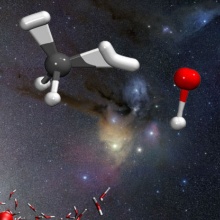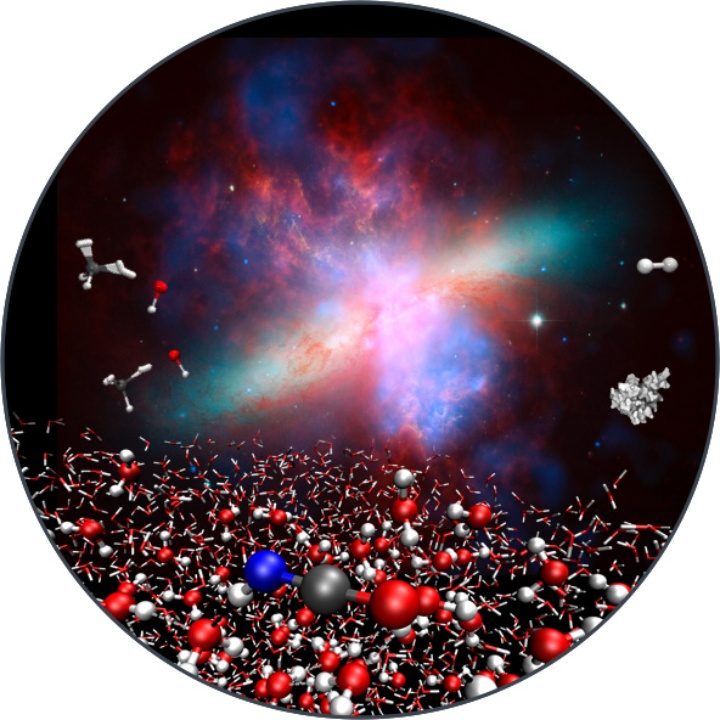Our astrochemistry activities are led by Dario Campisi. Previous key researchers were Germán Molpeceres and Thanja Lamberts, now a professor in Leiden.
The darkness readily observed between the stars on a clear night sky is far from empty. In fact, many molecules have been detected during the past century. This is even though the collision probabilities are small and temperatures are below 100 K in the clouds where stars are born. How these species are formed precisely is not fully known, and therefore, formation routes used in astrochemical models and reported in databases (UdfA, OSU, KIDA) are primarily based on estimates. We can contribute with our rate calculations incorporating the effect of atom tunneling down to low temperatures.
Simple association reactions leading to saturated molecules cannot take place in the gas phase but rather need a third body, which is provided by ice-covered dust grains that act as an energy sink. Moreover, the ice provides a locally increased density of species where chemistry can flourish.
We study the surface processes from adsorption and energy dissipation to diffusion, reaction, and desorption. We found rather broad distributions of adsorption energies in several cases. The heat generated by adsorption enables rapid diffusion immediately after adsorption or dissipates into the bulk. We found heat dissipation to be faster than diffusion even for weakly bound nitrogen atoms on a water surface. While diffusion is probably efficient for hydrogen molecules adsorbed on the surface, we have clear indications that heavier species tend to get locked in deep binding sites.
Simulations that consider surface effects can be done in several ways. The simplest approximation is to realize the symmetry breaking and the typically hindered rotation. Therefore, symmetry factors can be ignored, and the rotational partition function can be kept constant. The next step would be to consider the effect of a small number of 'surface' molecules, i.e., to make use of small oligomer structures. In this way, it is also possible to obtain a first approximation of the influence of the binding mode on the value of a rate constant. However, using a combined approach of Quantum Mechanics / Molecular Mechanics (QM/MM), the effect of a full surface can also be studied. Finally, the surface-adsorbate interaction can be treated with machine-learning techniques, which is especially advantageous to understand the orientation effects of adsorbates. Such models have proven fundamental to determinate orientation effects in the formation of prebiotic molecules and in revealing the catalytic role of water in the formation of formaldehyde from carbon atoms.
The rate constants obtained are not only useful for astrochemical models but can also help elucidate experiments in the field of surface astrochemistry. In particular, kinetic isotope effects (KIEs) can be determined and compared to those obtained experimentally. Reactions where deuterium atoms are involved are, for instance, expected to take place slower than the analogous reaction with H atoms. Experimentally, the effect of diffusion is included in the KIE, whereas our KIE's cover only the reaction.



